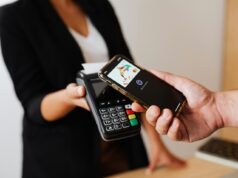The bank is an exciting place to go as a kid. We all remember that feeling of getting our first bank account and the sense of independence it gave us. It was ours! As parents, we want to set up bank accounts for our kids so they can have those same feelings and be better positioned financially in adulthood.
In this article, we’ll talk about how to open bank accounts for kids, what you need to know before opening one and why it’s a good idea if your child wants one when they grow up.
What is a Bank Account?
A bank account is an individual or joint account that a bank provides to its customers. The bank will offer you a range of features such as the ability to deposit funds, withdraw money and use an ATM card in order to access cash from other bank accounts or use it for purchases.
Bank accounts enable you to save money and spend it throughout your lifetime. Many people use bank accounts to set up savings and work towards goals such as buying a car or home.
How do Bank Accounts Work?
Bank accounts work by making you the customer of the bank, giving you access to their services in exchange for complying with their terms and conditions. When you open an account at a bank, they will ask about your personal information including your identity, address and citizenship, which they will use to verify you are who you say you are.
These rules came about in response to the 9/11 Terrorist Attack through passage of the U.S. Patriot Act. The bank will also ask for your contact information and how you want to receive bank statements.
Once you’ve opened the bank account, you can deposit money into it from other bank accounts or by depositing cash at a teller window (either in person or through an ATM). When paying for things with debit cards or using checks drawn on the bank’s funds, the bank will withdraw funds from your account, either at the time of purchase or once a bank statement is processed.
What are Bank Accounts for Kids?
Bank accounts for kids are bank accounts for children who are under the age of 18. Because minors can’t legally sign contracts due to the lack of capacity established under law, they often need to open joint accounts with a parent or guardian who also serves as an account owner.
This requires at least one of the joint owners to be the age of majority in the state of residence for both parties. Likewise, parents and guardians can also open prepaid debit cards through services like Greenlight, goHenry, Famzoo or others.
Prepaid debit cards for kids are bank accounts without the bank. They work through a company or organization that issues and manages them in exchange for you paying monthly fees to use them.
These prepaid debit cards for kids and teens also include parental spending controls that help make sure your kids don’t spend more than they should.
There are a number of bank accounts for kids out there, and it’s important to read the terms carefully before deciding which one is right for you or your child.
Parents need to be aware that bank account contracts require children between 12-18 years old to have their parents’ signature and name on the account as well under a joint account ownership.
Why Open Bank Accounts For Kids?
There are many reasons why it makes sense to open bank accounts for kids.
It teaches the child about responsible spending and saving behaviors. They will have an account at a bank where they can deposit their money, but also access cash through debit cards or checks drawn on bank funds. This means that by having to manage their own finances responsibly – balancing what is saved with how much is spent – they’ll become more financially literate, better positioned to manage money on their own later in life as adults.
It makes it easy for them to save. They can open a child bank account with a debit card to spend cash from the account at any time, or deposit funds through an ATM or bank teller window; this will help teach children how banks work which will lead to more bank accounts when they are adults.
It provides financial protection. Parents can open bank accounts for kids and have a say in what types of bank account it is (whether it’s online or branch-based) as well how much the child has access to spend, which will help them avoid being exploited by other people trying to take advantage of them.
Opening bank accounts for kids is worth it because they have the potential to become financially literate, which will help them make better financial decisions in adulthood and provide a sense of personal responsibility for their own money management.
Types of Bank Accounts for Kids
There are bank accounts you can get for minors, joint bank accounts with a parent or guardian and an individual bank account that does not have a cosigner. It is important to fully understand the rules relating to each type before deciding on which one to open for your child.
Checking Account
A checking account is used to deposit money, pay bills and withdraw funds via checks or debit cards. It’s an account where you can spend cash from the account at any time, or deposit funds through an ATM or bank teller window; this will help teach children how banks work which will lead to more bank accounts when they are adults.
Savings Account
A savings account is where money is saved and the savings are compounded. A savings account has a separate balance that must stay below what’s known as the federal deposit insurance limit of $250,000 per depositor, but it can cross this amount and not have coverage above this limit.
A savings account for kids helps teach savings behaviors and how to work toward financial goals.
Prepaid Debit Card
A prepaid debit card is a prepaid card that can be used at any time like a credit or debit card. It is not connected to an account with a bank, but rather the prepaid balance (which you load funds onto) is electronically stored on it and accessed through swiping just like using a regular credit or debit card.
Closely resembling prepaid cards are gift cards, which allow you to load a balance onto a prepaid card, which can then be spent at any store that accepts cards.
A prepaid debit card is useful for people without bank accounts because it’s easy to withdraw money or make purchases with the prepaid balance on it. These are also helpful tools for children who want to learn how to use credit and debit cards while keeping their own finances separate. Likewise, by only allowing a prepaid balance on a card, kids can’t overdraw their funds, avoiding non-sufficient funds fees or overdraft charges.
However, be aware of some prepaid debit cards because they charge fees for many routine actions. Make sure you understand whether having a prepaid debit card makes sense for your needs.
Custodial Account
A custodial account is an account that is designated for a custodian to manage on behalf of the minor.
Parents or guardians are custodians who have control and authority over what happens with their child’s money in this type of account. The custodian only has custody, not ownership-rights to the funds. Custodial accounts are usually used when parents want to teach their child about the financial world and how to manage their own finances while still providing some control over what happens with those funds.
A custodial account can be opened in any type of bank including online banks. Custodians can use funds held in the account only on activities or purchases which directly benefit the child.
Likewise, custodial accounts work as investment accounts for holding long-term assets on behalf of the minor account owner as well.
When Should You Open a Bank Account?
You should open a bank account when you are financially mature and have a parent or guardian who is willing to act as the custodian.
One way to know when you’re ready for an account is that there should be some consistency with how much money you make on your own so that they can help teach responsibility in managing finances.
Bank accounts are also good because it’s hard for kids to get a credit card and make purchases that they can’t afford.
Once you develop a sense of how to manage money responsibly and handle the debts you accrue with money you earn, you’ll need to decide how many bank accounts you should have. This is because you might want these bank accounts to be earmarked for separate needs, not commingling funds without a clear purpose for how you plan to use them.
Having this segregation can provide an easier way to manage your money and work toward accomplishing financial goals you set for yourself.


































